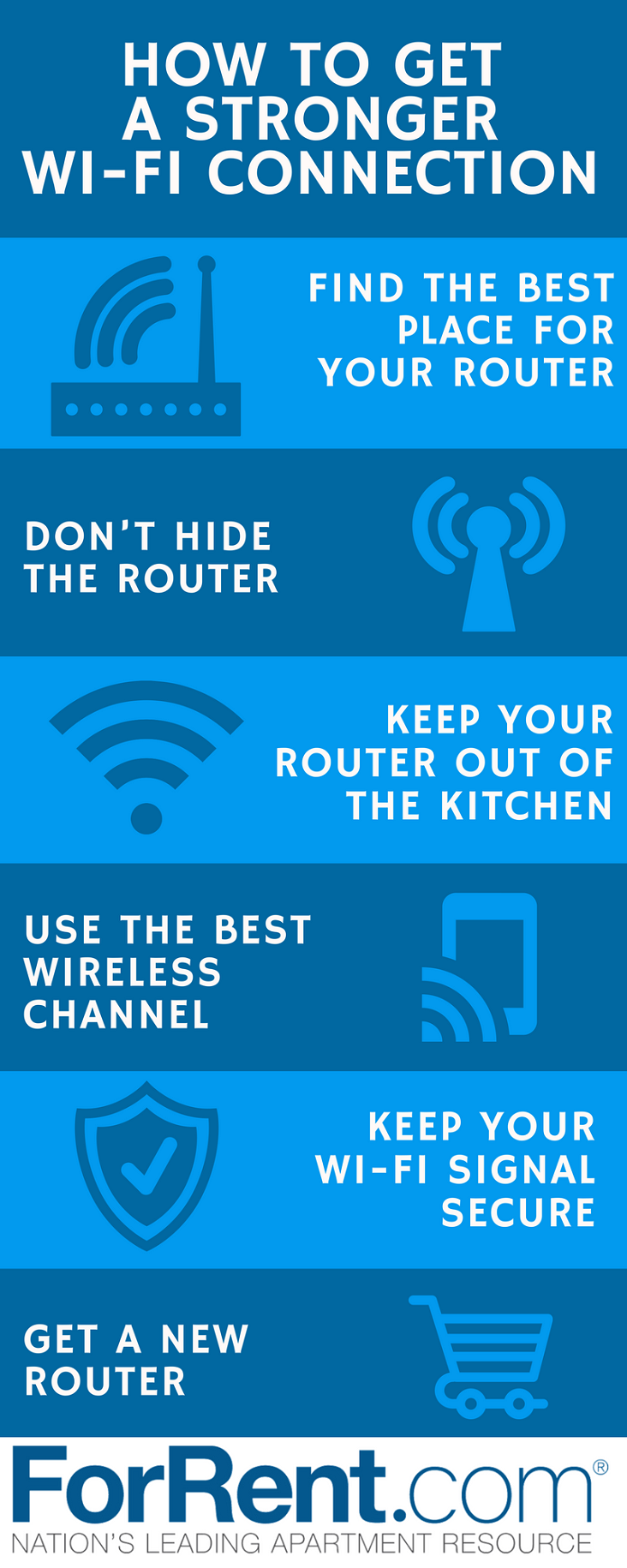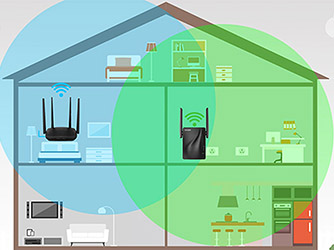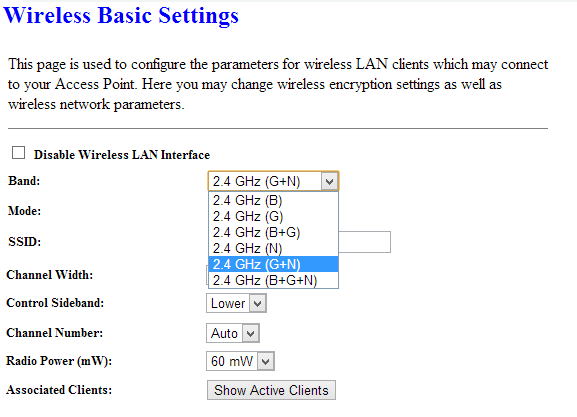How Can I Improve Wi-Fi Signal?
Having a strong Wi-Fi signal is essential for a reliable internet connection. Poor Wi-Fi signal can cause slow speeds, dropped connections, and even dead zones where you can’t get a connection at all. If you’re looking to improve your Wi-Fi signal, there are several steps you can take to boost your signal strength. This includes locating your router in the optimal spot, adjusting the router antennas, using a Wi-Fi extender, and making sure your router is up to date. With a few simple adjustments, you can improve your Wi-Fi signal and enjoy a stronger connection.
Identifying the Problem with Wi-Fi Signal
Wi-Fi signal can be a major source of frustration for many people. Whether it’s slow speeds, unreliable connections, or frequent disconnects, a weak Wi-Fi signal can make it difficult to use the internet. To make sure you’re getting the most out of your network, it’s important to identify and troubleshoot any issues. Here are some key steps to help you identify the problem with your Wi-Fi signal.
First, you should check if your router is in the right location. Make sure it is in a spot that minimizes interference from other electronic devices, such as microwaves and cordless phones. Additionally, make sure your router is placed at least five feet away from walls and other obstacles.
Second, you should check the settings on your router. Many routers come with preconfigured settings that may not be ideal for your home network. If your router has an antenna, make sure it’s pointing in the right direction. If your router supports dual-band operation, make sure you’re using the fastest frequency. Additionally, you should check to see if your router is using the latest firmware.
Third, you should check for wireless interference. Make sure there aren’t any other wireless networks operating on the same channel as your router. If there are, you can try changing the channel on your router. Additionally, you should check to see if there are any other electronic devices, such as cordless phones, that are interfering with your signal.
Finally, you should check your Wi-Fi connection speed. If your connection is slower than it should be, you may need to upgrade your router or upgrade your internet plan. If all else fails, you may need to contact your internet service provider for additional help.
By following these steps, you can identify the problem with your Wi-Fi signal and take the necessary steps to get the best possible connection.
Assessing the Current Wi-Fi Setup
When it comes to improving your Wi-Fi signal, the first step is assessing your current setup. There are several key components to consider, such as the router model, the placement of the router, the number of devices connected, the speed of your internet connection, and the distance from the router.
To get the most out of your Wi-Fi connection, it is important to make sure that all the elements of your network are working together optimally. Start by identifying the model of your router, as this will determine the maximum speeds available. Next, check the placement of the router, as the signal will be strongest when the router is placed in the center of your home or office.
Next, take a look at the number of devices connected to the network. Multiple devices can put a strain on the router’s resources, resulting in a slower connection. Additionally, it is important to check the speed of your internet connection. Many providers offer speed tests to help you determine the levels of service you are getting from your internet provider.
Finally, check the distance from the router. The farther away you are from the router, the weaker the signal will be. It is important to make sure that the router is within range of the devices that need to connect to it.
By assessing the current Wi-Fi setup, you can identify any areas that need improvement to ensure that you are getting the most out of your Wi-Fi connection.
Upgrading the Wi-Fi Equipment
If you want to improve your Wi-Fi signal, the first step is to upgrade your Wi-Fi equipment. A good Wi-Fi router is essential for providing a strong and reliable signal throughout your home or office. Newer routers come with advanced features, such as dual-band technology, beamforming technology, and MU-MIMO technology, which all help to boost the strength and range of the signal. Additionally, upgrading your modem to one with DOCSIS 3.1 technology can ensure that the signal reaches your devices faster and more reliably. If you’re using an older router, it’s likely that it’s not up to the job of providing a strong and reliable connection. Investing in a more modern router can help to improve your Wi-Fi signal significantly.

Applying Wi-Fi Network Optimization Techniques
Having a strong Wi-Fi signal is essential to keep your digital life running smoothly. Unfortunately, weak signals and poor connection speeds can be a significant nuisance. Fortunately, there are a few simple techniques you can use to improve your signal and get the most out of your network.
One of the most effective methods for boosting your Wi-Fi signal is to optimize your network’s settings. This can be done by adjusting the channel width, frequency, and signal strength settings in the router’s configuration page. Additionally, setting up a wireless repeater or access point can help extend the coverage of your network.
Another way to improve your signal is to reduce the amount of interference your router is exposed to. This can be done by relocating your router away from any obstructions or sources of interference, such as microwaves, cordless phones, or other wireless networks. You should also check for any firmware updates that may be available for your router, as these updates can sometimes provide improved performance.
Finally, if you’re still having trouble with your signal, you can consider investing in a higher-quality router. Modern routers are designed to provide a much stronger signal than their predecessors, and many come with additional features such as advanced security and parental controls.
By following the simple tips above, you can improve your Wi-Fi signal and ensure that your network is running as smoothly as possible. With a stronger signal and better connection speeds, you can enjoy a better digital experience.
Exploring Alternative Wi-Fi Solutions
With the increasing demand for Wi-Fi access in homes and businesses, it is more important than ever to find ways to improve the Wi-Fi signal. Fortunately, there are several alternative solutions that can help improve the signal strength and reliability of Wi-Fi access.
One of the most popular solutions is to use a wireless repeater or range extender. These devices are designed to amplify the existing Wi-Fi signal, allowing users to access the network from farther away. The repeaters and range extenders work by boosting the signal from a wireless access point and rebroadcasting it, extending the range of the network.
Another solution is to install additional access points. This is a more complex solution, but it can be a great way to ensure reliable coverage in larger spaces. By installing additional access points in different locations, it is possible to create multiple overlapping Wi-Fi networks that can provide better coverage and stability.
Finally, users may want to consider upgrading their existing Wi-Fi router. Newer routers come with features like beamforming that can help improve the signal and range of the network. Additionally, they are often faster and offer better performance than older routers.
By exploring these alternative Wi-Fi solutions, users can easily improve the Wi-Fi signal and ensure they have a reliable and secure connection.
Troubleshooting Wi-Fi Issues
If you’re in a situation where your Wi-Fi signal is weak, spotty, or non-existent, there are a few steps you can take to improve it. The first thing to do is to determine if the issue is with your device or the network. Some common issues that can cause poor Wi-Fi signal include distance from the router, interference, outdated hardware, and outdated software.
To troubleshoot these issues, start by checking the connection between your device and the router. You can do this by moving your device closer to the router or using a Wi-Fi analyzer to check the signal strength and identify any interference. If the signal is still weak, try unplugging the router for a few seconds, then plugging it back in. This will reset the connection and often times improve the signal.
If these steps fail to improve the signal, you may need to upgrade your router or device. Newer routers feature the latest Wi-Fi technologies and provide a stronger connection. If you’re using an older device, you may need to upgrade to a newer model that supports the latest Wi-Fi standards. Additionally, you can look into Mesh Wi-Fi systems, which are designed to provide a stronger, more reliable connection throughout your home.
No matter what steps you take, troubleshooting your Wi-Fi issues is essential to ensure you’re getting the best connection possible. With the right approach, you can significantly improve your Wi-Fi signal and enjoy a smooth, fast, and reliable connection.
FAQs About the How Can I Improve Wi-Fi Signal?
1. What can I do to improve my Wi-Fi signal?
Answer: There are several things you can do to improve your Wi-Fi signal. These include checking the placement of your router, using a Wi-Fi extender, and updating your router firmware.
2. Is there any way to boost my Wi-Fi signal?
Answer: Yes, you can boost your Wi-Fi signal by using a Wi-Fi extender or a Wi-Fi repeater. This will extend the range of your Wi-Fi signal and may help improve the signal strength.
3. How can I increase the speed of my Wi-Fi connection?
Answer: To increase the speed of your Wi-Fi connection, you can try moving your router to a more central location in your home, using a Wi-Fi extender, and checking if your router is using the latest firmware. Additionally, you can check if there are any other wireless networks in your area that may be causing interference with your connection.
Conclusion
In conclusion, improving your Wi-Fi signal can be done in a variety of ways. From changing the placement of your router to using a Wi-Fi extender, there are many ways to ensure that you have the best Wi-Fi signal possible. Taking the time to assess your current Wi-Fi signal, and make the necessary adjustments, can help to improve your overall connection and allow you to take advantage of the full potential of your network.




